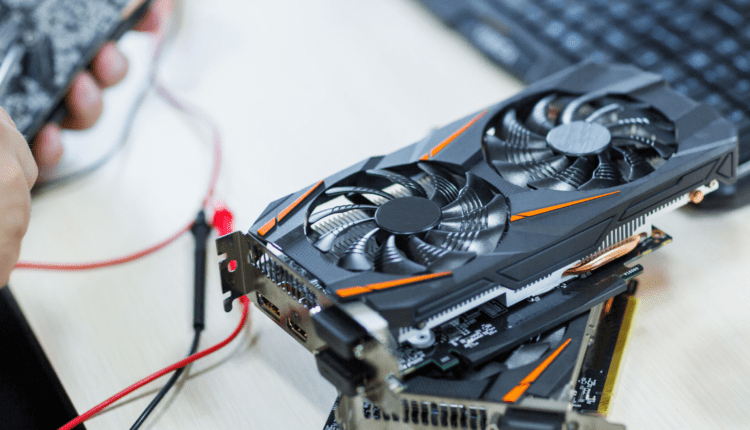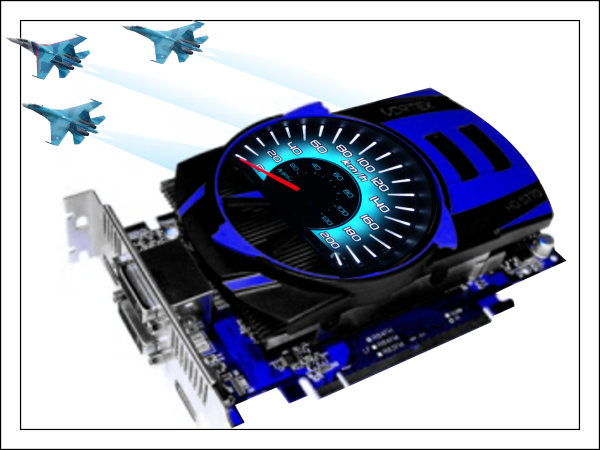How to overclock a video card with a utility?
In order to overclock your video card, it is not at all necessary to be a hardened master. A calm and thoughtful approach allows you to do this business absolutely without risk to the device. It is worth noting that all responsibility lies with the overclocker, since special programs provide for the disclaimer of responsibility.
Overclocking a PC comes down to increasing frequencies above the nominal mode for the sake of increasing performance. But it should be borne in mind that this increase will also lead to an increase in noise, higher power consumption, as well as heat dissipation. As a result, the stability of operation may noticeably decrease and the operating potential of the device will decrease. For video cards, the core and memory frequencies become the object of overclocking.
In some cases, by performing software manipulations (for example, flashing the BIOS of a video card), it is possible to use additional computing units that were initially blocked by the manufacturer.
The need to overclock the video cardutilities are brewing if the processor is outdated and does not pull new applications, programs and games. True, it should become so obsolete that, in extreme cases, it would not be a pity to lose it completely. But still, there is no need to run for a new video card every time, since you can squeeze out the potential of the old one to the drop. It is better to resort to overclocking the video card with a utility – a forced increase in the speed of the processor. Thus, it is possible to involve additional computing units, which were initially protected by the manufacturer, to work. Moreover, the performance of the device will increase from 5 to 15%, which is significantly reflected when working with the device. As a rule, gaming video cards are overclocked. On a normal working device, this is not required, and is impossible without good cooling. It is very important to properly prepare for overclocking. The power supply must be with a margin, since an unauthorized shutdown can lead to complete failure. Since the driver for the video card plays a significant role, it is better to overclock through programs, rather than software manipulations (for example, flashing the BIOS)
To date, overclocking is carried out by three types of programs:
- through the driver
- manufacturer’s utilities (ASUS MSI ZOTAC);
- stand-alone programs, such as Riva Tuner.
The methods are difficult to distinguish from each other, so you can stop at the third option as the simplest. The result of overclocking is presumably an increase in frequencies. Some modern motherboards are endowed with overclocking potential, but the method has not yet proven itself, therefore it does not pull on a reliable one. It is better to resort to a programmatic method. As such, a huge number have also been developed. Manufacturers even report profile overclocking utilities to the set.
Utilities for overclocking video cards
Some utilities are designed for video cards stuffed with chips from one manufacturer or another. There are also utilities adapted to all programs. In general, there is no difference which utility to use. Usually, each user stops at the one with which it is easier for him to work. The Riva Tuner program is quite convenient and fast. Let’s say that one video card works with one monitor.
The utility launched for the first time will display the word “Customize…" on the screen with two triangles on the right, the upper one controls low-level overclocking, and the lower overclocking with the driver. Those with ATI graphics cards or older releases of NVIDA up to GeForce 4 are better off with a low overclocking triangle. Owners of more powerful video cards can safely turn to the lower triangle.
Stages of overclocking a video card
Overclocking with the help of a driver occurs in several stages. Click on the desired triangle. The functionality that opens will depend on the triangle itself, but you need to start with the image of the video card on the screen. Clicking provides full information about the current state of the card core frequency and memory frequency. To influence this data, you must tick the box in the upper left corner. If before this dust attempts to affect the processor, then it is better to stop at “Reboot”, that is, reboot, and start again from the beginning; if the frequencies are needed, then click on Detect now ; if there is no more desire to experiment, then just click “Cancel”.
Watch a video about overclocking a video card using the utility.
The interface has not changed much, except that the sliders came to life and you can influence them. If an old-style video card is being overclocked, then you can proceed, otherwise it’s time to study the list in the upper right corner. Usually the frequency is set in 2D. Since there is little sense from it, it is necessary to change it to 3D. Presumably the frequency increased to 500 MHz.
Now the platform can be considered ready for overclocking. While the core is gaining momentum, it’s better to process the memory. To do this, we determine the memory frequency of 1050 MHz. The settings should be tested before validation. There is also an option for this. After clicking OK, you can test the increased frequencies. You can run any program or game and follow the changes. You can increase the frequency before the appearance of artifacts. As soon as stability is broken, a limit is set.
To start overclocking an already heated core, you need to return the memory frequencies to the source codes. The procedure is the same as with memory. With each increase in frequency, it is necessary to monitor the changes. Image freezes are the result of overzealous overclocking. It is necessary to restart the computer and start from the beginning, avoiding critical frequencies.
In fact, the procedure for overclocking a video card with a utility is very simple, although some video cards automatically reset their frequencies when they overheat when they overheat . That’s why you have to be very careful with them.
To complete the process, it is necessary to work the core and memory with new increased frequencies in tandem, since in some cases they are individually adjusted, and for joint action, the frequencies have to be reduced.
In order to avoid having to re-set the frequencies the next time the device boots up, it is necessary to confirm the “Apply overclocking at Windows startup” option. Add to this high-quality cooling and the utility can be played with great comfort on an overclocked video card.



